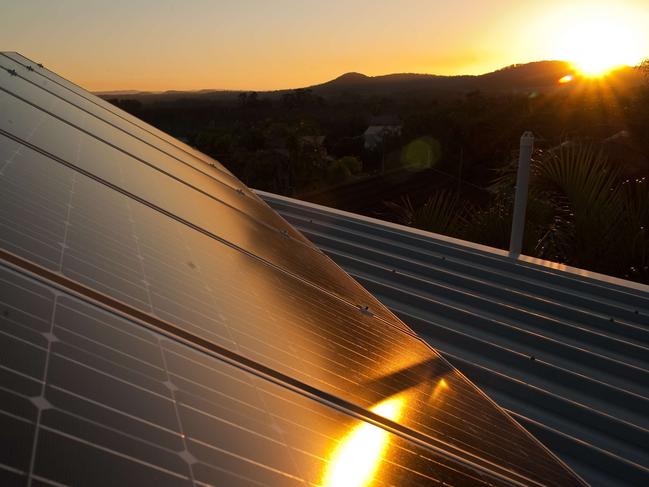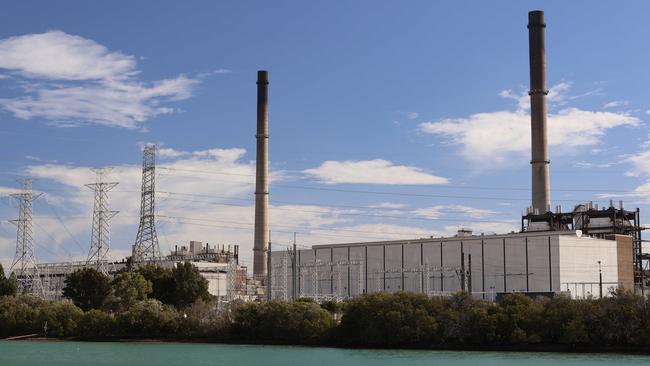Around 450k SA households slugged peak power rates as power regulator reveals tariff system rort
While SA households are being slugged with “peak” retail power rates, the energy regulator has revealed what the actual wholesale costs are.
National
Don't miss out on the headlines from National. Followed categories will be added to My News.
About 450,000 South Australian households are being slugged with “peak” retail power rates when the wholesale price is less than zero, the energy market rule maker has revealed.
It has also warned that time-of-use tariffs paid by these households “may be creating costs for consumers without necessarily delivering benefit.”
The Australian Energy Market Commission has honed in on “problematic” signals in SA in a new pricing discussion paper covering the national electricity system.
To illustrate its concerns, the AEMC analysed the state’s time-of-use tariffs against SA wholesale costs during November and December 2024.
The AEMC said its research showed abundant solar brought down wholesale costs to less than zero soon after 9am, “indicating an excess of generation to the extent that the market is paying consumers to use energy.”
But the peak rate still applied for customers on time-of-use tariffs. It wasn’t until 10am that the “solar sponge” window opened and usage charges fell substantially.

The AEMC also found wholesale costs were below average until 6pm, even though peak rates had been back in force for hours.
While the AEMC focused on time-of-use tariffs provided to electricity retailers by distributor SA Power Networks, the analysis is highly relevant to households because retailers typically adopt network price structures in their variable-rate plans.
The cost to run an appliance such as an airconditioner when peak rates apply is about double that during the solar sponge window.
More than 50 per cent of SA households are already on a retail time-of-use tariff – a figure set to grow rapidly due to the AEMC’s recent decision to accelerate smart meter rollouts.
Conceived in 2014, time-of-use tariffs impose high prices during heavy demand periods to discourage power consumption.
The rationale was that these tariffs could help to minimise the need to build new network capacity, which is paid for by increasing bills.
But “the current approach may be creating costs for consumers without necessarily delivering benefits,” according to the AEMC discussion paper.
Critics argue that nowhere in the nation is the problem as acute as in SA. After embracing renewable energy, SA has at times had some of the highest power prices in the nation.

AEMC chair Anna Collyer said: “We are investigating whether the framework remains fit for purpose.”
The South Australian Council of Social Service made a submission to an earlier stage of the AEMC review and its CEO Ross Womersley told this masthead: “There’s no doubt in our minds that time-of-use tariffs aren’t doing the work that was being imagined when they were introduced.
“It is crucial that energy market operators intervene to address the failings in the system,” Mr Womersley said.
SA’s current network tariff structures were approved about five years ago. The structures for the five years from July 1 were finalised in April.
An SA Power Networks spokeswoman said the new structures had been approved by the Australian Energy Regulator and “developed in consultation with stakeholders during our regulatory process for 2025-30 with consideration to the distribution network demand profile”.
“The tariff structures will be reviewed in conjunction with our distribution network demand profiles when developing network tariffs for 2030-35,” she added.

The SAPN spokeswoman said that from July, the time-of-use tariff “solar sponge” window would be extended by an hour, meaning peak rates would resume at 4pm.
The benefit from that delay will be offset by further increasing the peak price.
Already, on a typical time-of-use tariff provided by a major power retailer, the peak rate is twice that in the “solar sponge” window.
The AER said that in assessing SAPN’s 2025-30 proposal, it compared the periods of high and low network use and found they aligned with the tariffs.
The AER said SAPN’s time-of-use tariffs for retailers had been influenced by stakeholder feedback since 2020 and complied with the National Electricity Rules.
The AEMC noted that moves were underway to give all households with a smart meter the option to pay a flat rate rather than a time of use tariff.
A Malinauskas government spokesman said it was looking “forward to recommendations that may arise from the (AEMC) review.”
More Coverage
Originally published as Around 450k SA households slugged peak power rates as power regulator reveals tariff system rort





